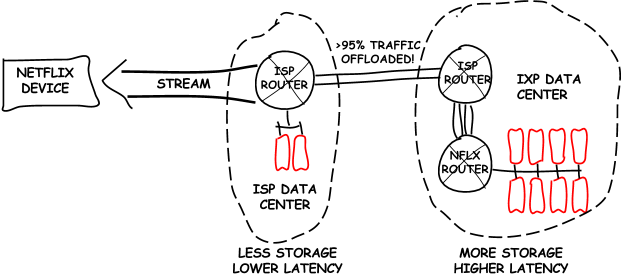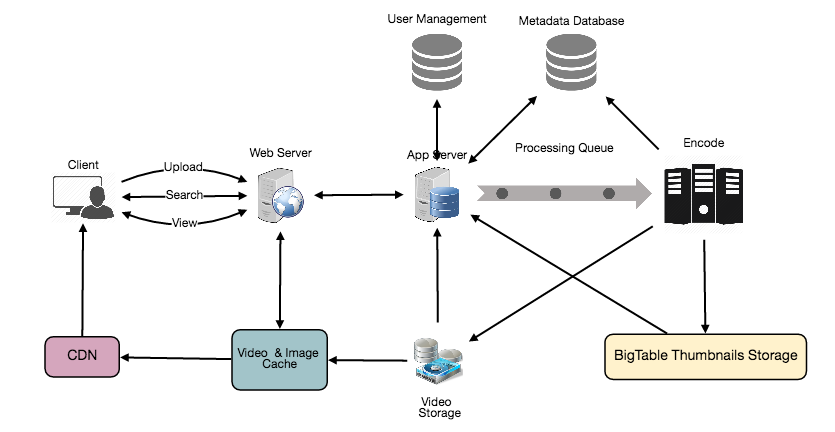Netflix System Design: A High-Level Overview
Netflix, the world's leading streaming entertainment service, serves millions of users globally. Let's dive into a high-level overview of its system design.
Key Components
-
Content Delivery Network (CDN) Netflix uses its own CDN called Open Connect to efficiently deliver content to users worldwide.

-
Microservices Architecture Netflix employs a microservices architecture for scalability and maintainability.
-
Data Storage A combination of SQL and NoSQL databases are used for different purposes.
-
Recommendation System Machine learning algorithms power Netflix's recommendation engine.
-
Cloud Infrastructure Netflix runs on AWS, leveraging various services for compute, storage, and networking.
System Design Diagram
Here's a simplified system design diagram of Netflix:

Code Example: Simple CDN Request Handler
Here's a basic example of how a CDN might handle a request for content:
const handleCDNRequest = async (req, res) => {
const contentId = req.params.contentId;
const userLocation = getUserLocation(req);
try {
const nearestServer = findNearestCDNServer(userLocation);
const content = await fetchContent(nearestServer, contentId);
res.status(200).send(content);
} catch (error) {
console.error('Error serving content:', error);
res.status(500).send('Error serving content');
}
};
This high-level overview gives you a glimpse into the complex system that powers Netflix. Each component plays a crucial role in delivering a seamless streaming experience to millions of users worldwide.